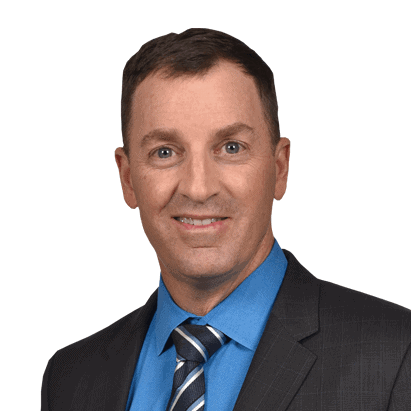Personal Trainer Gets New Regimen Thanks to OAT Surgery
When a rare knee condition caused Drew to lose bone and cartilage just above her knee, she knew she had to take immediate action to help herself. As a personal trainer, Drew relied on her athleticism and an optimal functioning body to be a model for her clients.
Drew turned to Randy S. Schwartzberg, M.D., a board certified sports medicine specialist and orthopaedic surgeon at Orlando Orthopaedic Center, to repair her knee through osteochondral allograft transplant (OAT) surgery.
“The biggest benefit (of surgery) is that I’m now able to run and be active again without the pain or locking in my knee,” Drew says. “Because I’m a personal trainer it’s vital for me to be able to do the things I ask my clients to do.”
“Drew had a rather uncommon condition in her knee called osteochondritis dissecans; it’s a problem where the cartilage on the end of the bone and the bone just below it become somewhat diseased and can break off,” Dr. Schwartzberg explains. “And you end up with missing cartilage and missing bone. Drew had it in one of the most common places, the distal femur, the end of the thigh bone.”
Osteochondritis dissecans occurs when the bone underneath the cartilage dies due to a lack of blood flow. Orthopaedic specialists classify osteochondritis dissecans according to the size and extent of the injury. For young children with bones that are still developing, the injury can often heal itself. Surgery may be necessary if the fragment comes loose and gets stuck between the moving part of the joint or if there is persistent pain.
Damage to cartilage is typically either degenerative, caused by wear and tear, or the result of a trauma like falling or jumping. Symptoms are not always present at first because cartilage doesn’t have nerve endings. Over time, damaged cartilage can affect normal joint function and cause pain, inflammation, and limited ability.
After realizing the extent and type of damage, Drew and Dr. Schwartzberg decided to pursue osteochondral allograft transplant (OAT) surgery. The procedure involves removing the damaged cartilage and bone from the joint and replacing it with healthy cartilage from a donor.
What Should I Expect from OAT Surgery?

Randy S. Schwartzberg, M.D.
OAT surgery is an option for patients who want to repair damaged joints. Joint preservation procedures are typically performed on patients with arthritis, chronic injuries or, like Drew, other joint-related conditions.
“I had a partial meniscus removal and cartilage removal in June 2015, and then a year later I had the OAT procedure,” Drew explains. “The process involved finding a cartilage match and then having the surgery to repair the cartilage to the femur bone and waiting for it to fuse back.”
OAT surgery is performed by an orthopedic surgeon under general anesthesia at an outpatient surgery center. The first stage involves removing the diseased cartilage and bone arthroscopically and confirming that the patient is a candidate for the osteochondral transplant. The second stage involves an incision to place the graft into the defect. A core of cartilage and bone from the donor is precisely press fit into the defect. The transplanted bone heals to the patient’s bone. This procedure is the only method to provide normal articular cartilage to a person with a cartilage defect.
What Is the Recovery Process Following OAT Surgery?
Postoperative pain control is provided with pain medicine and a cold therapy unit. The latter is designed to minimize swelling and inflammation and help with pain control. Because regaining knee range of motion is an early postoperative challenge, a continuous passive motion machine is utilized to optimize range of motion return. It is typically recommended to use crutches and avoid weight bearing on the operated leg for the first six weeks postoperative. This protects the transplant while it heals.
To restore full range of motion and regain athletic function, it is imperative that patients adhere to a physical therapy program. Committing to one’s rehabilitation regimen will ensure that the benefits of the procedure are long-lasting and that patients can safely return to their active lifestyles, a quality Dr. Schwartzberg says was no problem for Drew.
“Drew was very motivated and had great rehab folks,” he says. “She progressed through the process extremely well. Her knee doesn’t have pain anymore and she’s back training in the gym. She’s in great shape and I think her knee is going to hold out for the rest of her life so that she can do whatever she wants to do athletically.”
With her successful surgery behind her, Drew is looking forward to getting back to the things she loves to do and enjoying life to the fullest again.
“I’m looking forward to running again without having any pain and not being apprehensive about doing certain movements and just being confident in all the things that I’m able to do,“ she says.
“It’s important to get yourself checked out when you feel something could be wrong and taking the steps that need to be taken to take care of yourself. You only get one body in this life; you might get an allograft, but you only get one body,” Drew says with a laugh.


